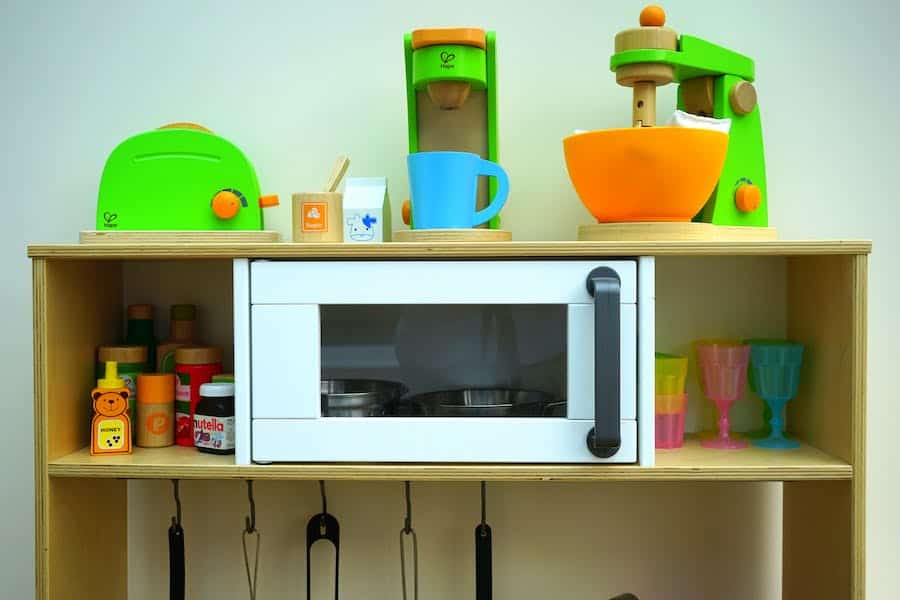Microwaves have revolutionized our approach to cooking and reheating food, offering a quick and convenient way to prepare meals. Yet, as we rely increasingly on this kitchen appliance, it’s essential to understand the safety precautions associated with microwave use. One common query is whether Ziploc bags, those ubiquitous plastic wonders designed for food storage, are safe for use in the microwave. In this comprehensive guide, we will explore the science behind microwave safety, the different types of Ziploc bags, potential concerns, and the manufacturer’s recommendations, ultimately answering the question: Are Ziploc bags microwave-safe?
Are Ziploc Bags Microwave-Safe?
Yes, Ziploc bags can generally be used in the microwave, but with some important caveats. It’s crucial to use the correct type of Ziploc bag, as not all of them are suitable for microwave use. Ziploc provides specific guidelines on their packaging, so always check for microwave-safe labeling. Additionally, be cautious about overheating, as prolonged exposure to high heat can cause bags to melt or release harmful chemicals. Follow the manufacturer’s instructions, and if in doubt, consider using alternative microwave-safe containers to ensure both food safety and the longevity of your Ziploc bags.
Ziploc Bags: An Overview
Ziploc bags, a product of the renowned brand SC Johnson, have become a staple in households worldwide. These versatile, resealable plastic bags offer many applications beyond their original purpose as food storage containers. Here’s an overview of Ziploc bags:
History: Ziploc bags were introduced in 1968 and have since become a household name for food storage and organization. The “Ziploc” name itself is synonymous with resealable plastic bags.
Variety: Ziploc bags come in various sizes and types to suit different needs. You can find sandwich bags, quart-sized bags, gallon-sized bags, and even jumbo-sized storage bags. Additionally, Ziploc offers specialty bags like freezer bags, slider bags, and steam bags, each designed for specific purposes.
Versatility: These bags are incredibly versatile and can be used for storing food, organizing small items, packing for travel, and more. They are known for their airtight seal, which helps keep food fresh and prevent spills.
Materials: Ziploc bags are typically made from low-density polyethylene (LDPE) plastic, which is considered safe for food storage. This material is durable, flexible, and resistant to moisture.
Sealing Mechanism: Ziploc bags are equipped with a unique interlocking zipper seal, which makes them easy to open and close. This seal helps keep food items secure and prevents moisture and air from entering or escaping the bag.
Microwave Use: While Ziploc bags are generally safe for microwave use, it’s essential to choose the right type and follow specific guidelines to avoid damage or melting. Some Ziploc bags are explicitly labeled as microwave-safe, but others may not be suitable for prolonged microwave exposure.
Environmental Considerations: Ziploc bags are reusable, but they are primarily designed for single-use. Concerns about plastic waste have led to a growing interest in eco-friendly alternatives, such as reusable silicone food storage bags.
The Importance Of Microwave-Safe Containers
The importance of using microwave-safe containers when heating or cooking food in a microwave cannot be overstated. Microwave-safe containers are specifically designed to withstand the unique conditions and potential hazards associated with microwave ovens. Here’s why they are crucial:
The primary concern is safety. Microwave-safe containers are made from materials less likely to release harmful chemicals or toxins when exposed to microwave radiation. Using non-microwave-safe containers can lead to the release of hazardous substances into your food, posing health risks.
Microwaves heat food by emitting microwave radiation, which excites water molecules. Some materials, like metal or materials with metallic elements, can spark or cause fires when exposed to microwaves. Microwave-safe containers are designed to prevent such incidents, reducing the risk of damage to your microwave and potential harm to you.
Even Heating: Microwave-safe containers are engineered to ensure even and safe heating. They distribute the microwave energy uniformly, preventing hot spots or uneven cooking that can occur with non-microwave-safe containers.
Microwave-safe containers are typically made from materials that can withstand the heat and intensity of microwave cooking without melting, warping, or breaking. This durability ensures that the container will maintain its integrity and functionality over time.
Using microwave-safe containers helps maintain the quality of your food. These containers are designed to withstand the temperature fluctuations and moisture levels typical in microwave cooking, reducing the risk of food becoming soggy, overcooked, or dried out.
Microwave-safe containers are convenient to use. They often come with lids or covers that can help contain moisture, reduce splattering, and keep food from drying. This makes reheating and cooking in the microwave more efficient and less messy.
Non-microwave-safe containers can absorb odors and flavors from heated food, leading to lingering smells or off-flavors in future uses. Microwave-safe containers are less likely to absorb odors, ensuring the purity of your food.
Potential Concerns And Risks
When it comes to using Ziploc bags in the microwave, there are several potential concerns and risks that users should be aware of:
- Ziploc bags are made from plastic, typically low-density polyethylene (LDPE), which can melt or warp when exposed to high heat. If the bag’s temperature exceeds its melting point, it can lead to a messy and potentially hazardous situation. This risk is especially relevant when using regular storage bags instead of those labeled microwave-safe.
- When plastic materials, including LDPE, are exposed to high temperatures, they can release harmful chemicals into the food. These chemicals may include phthalates and bisphenol A (BPA), which are known to be potentially harmful to human health. To minimize this risk, it’s crucial to follow Ziploc’s guidelines on microwave usage and only use bags explicitly labeled as microwave-safe.
- Microwaving food in Ziploc bags can sometimes create hot spots within the bag, leading to uneven cooking. This uneven cooking can result in foodborne illness if certain parts of the food do not reach a safe temperature. It’s essential to ensure that the food is evenly distributed within the bag and that you follow recommended cooking times and power levels.
- Ziploc bags are designed to be leak-resistant, but they may not always be leakproof when subjected to high heat in the microwave. Liquids or melted materials inside the bag can leak out, creating a mess and posing a risk of burns or scalds.
- While not a direct safety concern, the environmental impact of using disposable plastic bags like Ziploc bags is a growing concern. These single-use bags contribute to plastic waste, and many seek more eco-friendly alternatives.
Microwave Safety Guidelines
Microwave safety guidelines are essential to ensure the safe and effective use of your microwave oven. These guidelines help prevent accidents, preserve the quality of your food, and maintain the longevity of your microwave. Here are some important microwave safety guidelines to follow:
Use Microwave-Safe Containers:
Always use containers and cookware labeled as microwave-safe. These items are designed to withstand microwave radiation and high temperatures without melting, warping, or releasing harmful chemicals. Avoid using metal, aluminum foil, and non-microwave-safe plastics, which can cause sparks or fires.
Cover Food:
When heating or cooking food in the microwave, use a microwave-safe lid or plastic wrap to cover your food. Covering helps retain moisture, ensures even heating, and prevents food splatters that can be difficult to clean.
Stir And Rotate:
Stirring and rotating food during cooking is essential to ensure even heating. Microwaves have hot and cold spots, and stirring or rotating helps distribute heat evenly. This reduces the risk of unevenly cooked or overheated food.
Follow Cooking Instructions:
Follow recommended cooking times and power levels in recipes or on food packaging. Overcooking can lead to burnt or dried-out food, while undercooking may result in foodborne illness.
Use Microwave-Safe Utensils:
Use microwave-safe utensils and utensils made of materials that do not heat up in the microwave, such as glass, ceramic, or microwave-safe plastics. Wooden or plastic utensils are generally safe to use.
Pierce Or Score Foods:
When cooking foods with a skin or membrane, like potatoes or hot dogs, pierce or score them with a fork or knife before microwaving. This helps release steam and prevents it from bursting.
Be Cautious With Boiling Liquids:
Boiling liquids in the microwave can be hazardous because they may superheat without boiling. To prevent accidents, use a microwave-safe container and insert a non-metallic item (e.g., a wooden stick or microwave-safe spoon) into the liquid to create nucleation sites for bubbles.
Final Words
Microwave ovens have undoubtedly transformed our kitchens, making cooking and reheating more convenient. However, their safe and effective use requires attention to detail and adherence to essential guidelines. Always remember to use microwave-safe containers and follow recommended cooking instructions to prevent accidents and ensure the quality of your food. Microwave safety is not just about avoiding potential risks but also about optimizing your culinary experience.
FAQ’s
Can I Microwave Food Directly In Ziploc Storage Bags?
It’s generally only recommended to microwave food directly in regular Ziploc storage bags if they are explicitly labeled as microwave-safe. Microwave-safe Ziploc bags are designed to withstand the microwave’s heat and radiation.
What Happens If I Microwave A Non-Microwave-Safe Ziploc Bag?
Microwaving a non-microwave-safe Ziploc bag can lead to melting, warping, and releasing potentially harmful chemicals into your food. It’s best to avoid microwaving non-microwave-safe plastic materials.
Are Ziploc Freezer Bags Safe For The Microwave?
Ziploc freezer bags are typically thicker and more durable than regular storage bags, making them a better microwave option. However, it’s essential to check for microwave-safe labeling and follow guidelines.





















